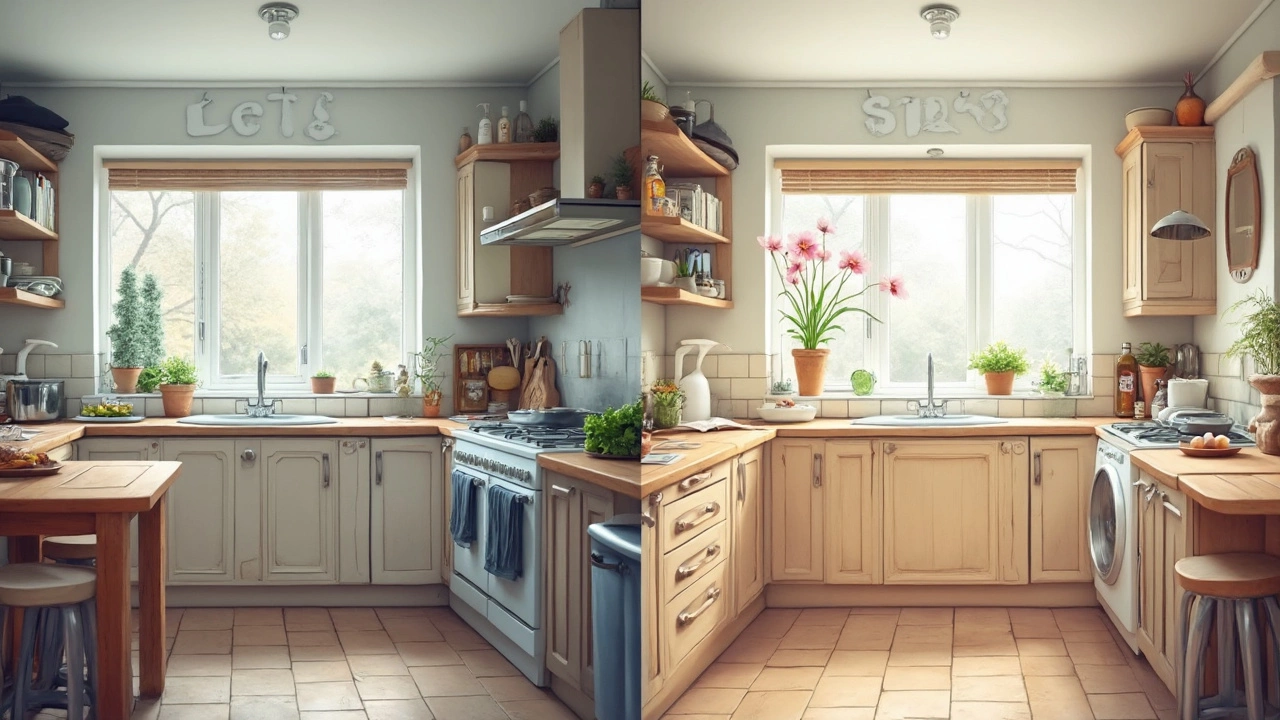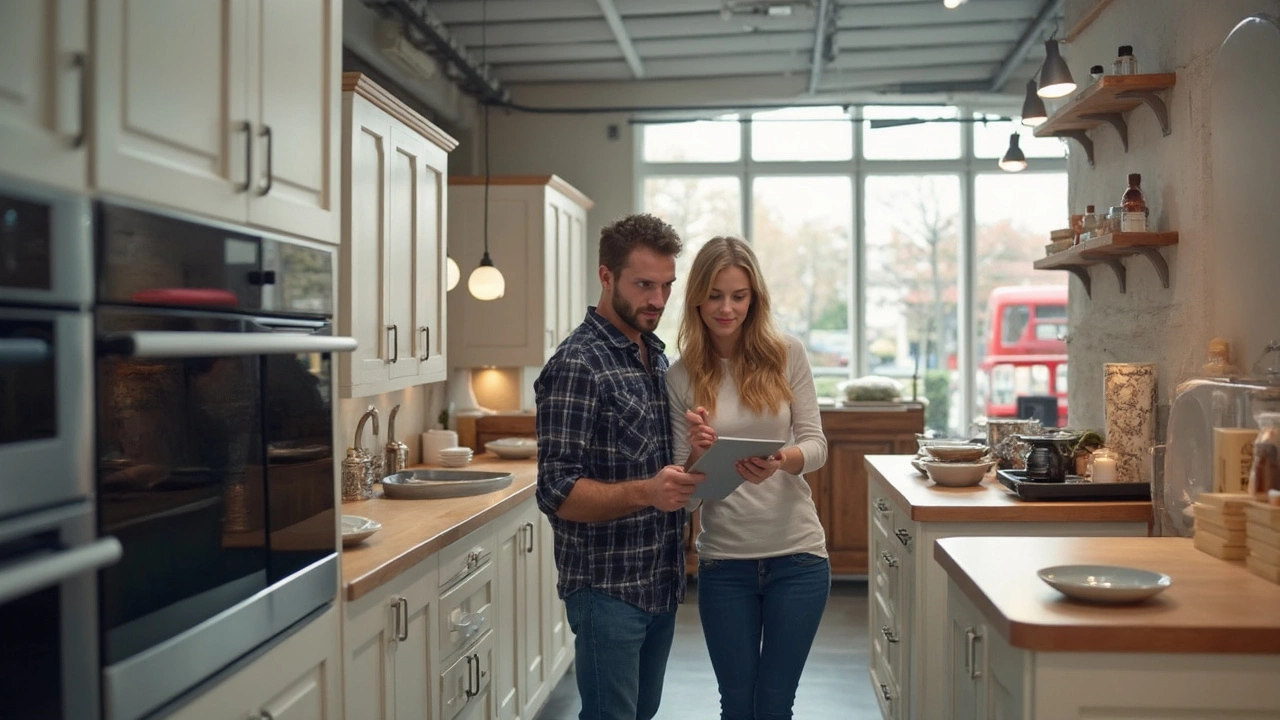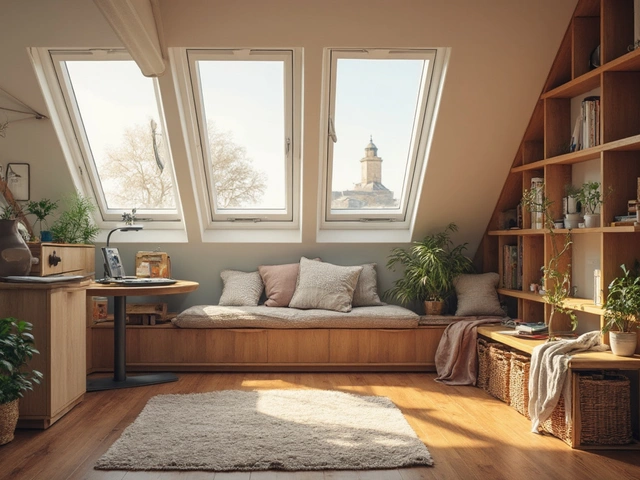Walk into any stylish kitchen on Instagram, and you’d think everyone’s cooking splashy meals amongst marble worktops and fancy gadgets. Reality check: kitchen remodels often cost more than advertised in glossy magazines or online photo dumps. There’s a real difference between a quick cosmetic spruce-up and a full-on gut job. Nobody wants to smash open the piggy bank only to realise halfway that just the cabinets have eaten up their savings. But how much should you really set aside? Knowing the numbers before you pull out the sledgehammer makes all the difference between a dream kitchen and a financial headache.
What Does a Real Kitchen Remodel Cost?
Everybody wants to nail down a magic number, but no two kitchens are exactly alike. In the UK, the average cost of a kitchen remodel in 2025 hovers somewhere between £9,000 and £18,000, with a broad national average sitting at about £12,500. According to a survey by Which? (updated March 2025), families in Bristol and London spend even more, hitting £15,000 to £20,000 for the works. That figure usually covers everything: cabinets, worktops, appliances, installation, electrics, plumbing, tiling, and even paint. But if you just want to swap cupboard doors and refresh surfaces, you might get by with £3,000 to £6,000. So, where does all the money go?
The guts of your budget are typically dropped into cabinetry, gobbling up around 30–35% of the spend. Decent quality units, whether flat-pack or bespoke, aren't cheap. Worktops are next, and real stone like granite or quartz will burn through your cash fast—laminate is much kinder on the wallet. Appliances often grab about 15–20%, especially if you want integrated or premium brands like Bosch or Smeg. Labour isn’t small change, either: installers, tilers, plasterers, and even skip hire add up to about another 20–30%. Got structural work in mind—knocking through to the dining room, say, or fitting a roof window? Add a cool £2,000 or more for building regs and trades.
Here’s a quick gut-check, based on recent UK jobs:
- Flat-pack kitchen with basic appliances and DIY install: £3,500–£6,000
- Mid-range kitchen, with decent appliances and pro install: £8,000–£15,000
- Premium bespoke design with luxury touches: £18,000–£35,000+
If that feels like a lot, you’re not wrong. Hidden extras lurk everywhere, from rewiring to bin systems, fancy taps, under-cabinet lighting, splashbacks, and flooring costs. “Homeowners typically underestimate the cost of installing kitchens—allow for 20% above quoted prices,” notes Emma Hall, senior project manager at Homebuilding & Renovating Magazine.
“You’d be amazed at the hidden extras—moving plug sockets or fixing a wonky wall can quickly push a remodel over budget.”
The pandemic-era supply hiccups are still rattling the market, making certain materials pricier than even two years ago. Delivery costs have crept up as well. While flat-pack deals from chains like IKEA or Howdens look tempting, don’t forget—assembly, installation, and old kitchen disposal often aren’t part of the sticker price. Kitchen fitters around Bristol now charge £180–£250 a day, and a typical project might need two workers for up to two weeks. Add in skips, permits, and the random ‘while you’re here’ jobs that always seem to crop up.
Do you plan to stay in your home long-term, or are you fixing up to sell? People who expect to move within five years often scale back on upgrades, leaning into mid-range fixtures and finishes to maximise return on investment. Surprising fact: a new kitchen can boost the value of your home by as much as 6%, according to the Royal Institution of Chartered Surveyors (RICS 2024). But blowing £30k on designer cabinets doesn’t always translate to a matching hike in selling price—buyers care more about layout and brilliant storage than branded taps.

How to Plan a Budget That Works for You
Before you set anything in stone, map out your priorities. Is it more cupboard space? Dream marble worktop? Or just a look that feels fresh on a shoestring? Creating a shortlist helps separate ‘musts’ from ‘nice-to-haves’, saving money in all the right places. Don’t get lured into overspending on things you’ll never use—do you really need a wine cooler or Quooker boiling tap?
The best first step: measure up the kitchen yourself with a tape measure. Sketch the basic layout. Take this with you to showrooms or when emailing for quotes. The more detail you offer, the less guesswork (and surprise costs) show up later. Most UK companies, from Wren to Magnet, offer free design consultations—and comparison is everything. Get multiple itemised quotes, breaking out labour, materials, appliances, and extras like lighting or tiling. Some will roll installation into the price, others leave it out, so always ask for the full picture. Watch for VAT—£1,000 of glass splashbacks suddenly looks less of a bargain when you add 20% tax.
Here’s a tip: always set aside an extra 15-20% for emerging issues. Damp walls, ancient wiring, gas pipes in the wrong spot—nobody plans for them, but they crop up in older UK houses all the time. For tight budgets, focus spend where it’s most visible: door and drawer fronts, handles, and lighting. You’d be shocked at how a fresh worktop or swapping brass handles can fake a high-end look.
If you’re handy and up for DIY, hiring separate trades directly rather than using the kitchen shop’s in-house team can save serious money. Sourcing tiles, taps, or lights online—sites like Victorian Plumbing or Tiles Direct—almost always cost less than showroom prices. But pay a proper fitter for electrics, gas, and plumbing—those jobs can’t be bodged safely, and bad work will trash your warranty and may land you with hefty repair bills.
Financing your project? More people are using zero-interest credit cards or home improvement loans, especially since pandemic savings have evaporated. Aim to avoid dipping into your overdraft or expensive credit—shop around for deals or see if your builder can offer staged payments. Some furniture shops partner with finance companies for ‘buy now, pay later’ schemes, but always read the fine print. You don’t want kitchen debt trailing after you long after the tiles have been grouted.
It's smart to think about sustainability. Choosing A+ rated appliances might cost more up front but will chip pounds off your energy bills year after year. Recycled worktops or eco plywood cabinets are getting more popular, especially if you plan on marketing your home as ‘green’ in a few years’ time. Got a keen eye? Hunt eBay and Facebook Marketplace for barely used ovens or sinks—so many folks rip out nearly-new stuff during a refit. Salvage yards offer characterful alternatives to the samey stuff on the high street, with reclaimed Belfast sinks or Victorian tiles making a space unique on a surprising budget.
Want to stretch your money? Consider refacing rather than replacing old cabinets. New doors, handles, and drawer fronts can freshen up tired cupboards for a quarter of the cost of gutting them. Vinyl wrap companies now cover existing fronts with modern finishes, providing a quick update without the mess of ripping out everything. Other hacks: upgrade just the worktops or add open shelves in tricky corners instead of splurging on bespoke pantries. Lighting is often overlooked, but swapping bulbs for LED spots or under-cabinet strips can make even boxy rooms feel like magazine layouts.
Don’t put it off until you’ve saved every last pound. Prices rise almost every year—delaying a kitchen update often just means paying more down the line. Whether you want a full-blown makeover or just to brighten things up, clear plans, a *realistic kitchen budget*, and sharp shopping will always save you hassle and money.

Smart Ways to Keep Kitchen Remodel Costs Down
If you love a bargain hunt, now’s your time to shine. High street suppliers like Wickes, IKEA, and B&Q roll out kitchen sales several times a year—Black Friday, January, and late summer are prime times for deals. Don’t wait till you’re desperate; plan your shop window so you can pounce when discounts hit. Some local Bristol fitters buy ex-display stock from showrooms at a fraction of the cost—worth asking about what’s coming up for clearance. Cabinet carcasses are nearly identical under the skin; splurging on ‘show front’ doors from a specialist, while using budget carcases from a chain store, can free up a surprising chunk of your budget for other upgrades.
Bespoke makers aren’t always pricey. Local joiners sometimes undercut big brands for made-to-measure units, particularly if you’re flexible with finish or layout. If you love a quirky vintage look, salvage yards or online auctions can dig up solid wood pieces that simply need a bit of sanding and oil. It’s an especially good trick if your kitchen layout is a bit wonky—a bespoke freestanding larder costs less than wrangling a standard flat-pack cupboard into a tight corner.
DIY painting is a winner for tired cabinets. With the right primer and a chunky weekend, you can refresh a small kitchen for under £200. Swapping your handles for brass or matte black (Amazon and Screwfix are goldmines for these) and adding wall shelves for ceramics or storage jars easily fakes that bespoke vibe. If tearing out the floor is out of budget, roll out a modern sheet vinyl or painter-friendly floor paint—cheaper than hardwood, with designs a world away from the hospital look of the past.
Saving on appliances? Hunt last year’s models as new lines are released. Big chains knock hundreds off prices for display or open-box cookers and dishwashers. Energy efficiency ratings can make a big difference here: A++ rated fridges and hobs use a lot less juice, so the upfront cost balances out over time. Always check the warranty, especially if you’re buying ‘graded’ or ex-display gear—it should still come with a manufacturer guarantee.
Don’t skip the install budget, even if you think you’re a dab hand at flat-pack assembly. Kitchen fitting is a skill—level cabinets, perfect joints, and zero leaks are what separate pro jobs from DIY disasters. You don’t want your new oven lurching loose after a few steamy cooking sessions. For electrics and gas, only use tradespeople on the Gas Safe and Part P (electrical) registers.
If you need to save money, ask yourself honestly: do you need to move sinks, ovens, or plumbing? The more you mess with the existing layout, the more you’ll pay. Keeping appliances and water where they are is the single easiest way to shave thousands off your quote. Tile only splashbacks instead of full walls. Choose laminate or composite worktops instead of marble or stone—modern versions fool most guests and are easier to replace if you fancy a change.
Storage hacks pay off too. Pull-out larder units and integrated bins cost a fortune, but simple open shelving, stackable baskets, or even IKEA RÅSKOG trollies offer bonus stow-away spots for a fraction of the money. Invest in smart storage for what you actually use—empty drawers or awkward carousels collect dust and gobble cash.
To squeeze the most value out of your *kitchen remodel* budget, plan, compare, and get hands-on where you can. Be realistic: have that 20% cushion, ditch the extras you’ll never use, and remember that a kitchen which fits the way you cook and live is what counts in the long run. The dream kitchen isn’t always the one that costs the most—sometimes, it’s just the one done right for you, within your means, that makes you actually want to spend time in there.





